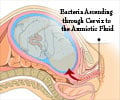Study shows that exercising during pregnancy can lead to metabolic health benefits in the offspring.

She continues, "We show how physical exercise during pregnancy, in combination with adequate vitamin D levels, enhances levels of a placenta-derived protein called SOD3 (superoxide dismutase 3), and that via several intermediate steps, this improves glucose tolerance in offspring."
The study involved pregnant mice exposed to voluntary wheel running, which were compared to groups that were sedentary. The researchers analyzed the effects of exercise on parameters like DNA methylation, cell signaling, and gene expression, particularly concerning glucose metabolism.
Findings revealed that SOD3 is an exercise-induced placenta-derived protein that activates a specific signaling pathway that controls DNA demethylation in the offspring's livers. This improves various aspects of glucose metabolism in offspring.
Vitamin D also played an essential role as a mediator of SOD3 expression - maternal diet had to have sufficient vitamin D levels to influence placental levels of SOD3 and improve metabolic health in offspring. However, high vitamin D levels in the absence of exercise did not lead to increases in SOD3.
The researchers also looked at SOD3 levels in pregnant women. They found that those who exercised more had higher serum levels and placental SOD3, which were highest during the second trimester of pregnancy.
Advertisement
"Although we can't be definitive about this with the current findings, we now plan to look in detail at how diet and exercise type and timing might be optimized with maternal serum SOD3 measurements to obtain maximum benefits for offspring," Kusuyama adds.
Advertisement
Goodyear states there may be wider benefits of SOD3 on other body organs also. For example, the authors are investigating the effects of maternal exercise and SOD3 on brain function in the offspring.
She adds, "We are also doing a more in-depth investigation of maternal exercise effects on placenta because we found there are a plethora of changes in this tissue, and these placental adaptations may also have life-long effects in offspring."
The authors suggest that understanding the mechanisms of how maternal exercise can reverse metabolic effects might lead to interventions that prevent generational transmissions.
Source-Eurekalert















